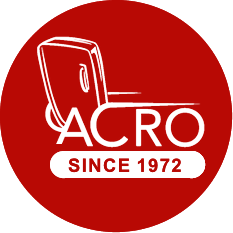Should You Repair or Replace Your Walk-In Cold Room?
Make the Right Call for Performance, Compliance & Long-Term Cost Savings
Walk-in cold rooms are the heart of food service, hospitality, healthcare and commercial kitchens — and when they start underperforming, the costs can pile up fast.
The big question: Should you repair or replace your walk-in cold room?
Making the wrong decision can lead to higher energy bills, stock loss, and even food safety breaches.
This guide will help you make a confident, informed decision based on age, performance, repair history, and return on investment.
When a Repair Is the Right Choice
If your cold room is still relatively modern and has a good service history, a targeted repair may restore full function without the capital cost of replacement.
✅ Choose Repair If:
-
The unit is under 10–12 years old
-
It’s the first or second major fault
-
The compressor, controller or fan has failed — but walls and insulation are intact
-
Repairs cost less than 30% of a new system
-
It has a strong service/maintenance history
-
There’s no major downtime or food spoilage involved
🛠️ Example:
A failed evaporator fan motor or faulty thermostat can often be replaced same-day with minimal impact on performance or compliance.
⚠️ Warning Signs You’re Wasting Money on Repairs
Sometimes, businesses sink thousands into recurring repairs when they should be planning for a new cold room. These are the red flags.
Consider Replacement If:
-
The cold room is older than 12–15 years
-
Repair costs exceed 50% of a new unit
-
There are ongoing refrigerant leaks
-
The insulation panels are water-damaged, bowed or degraded
-
You’ve had 3 or more repairs in the past 18 months
-
Your power bills are increasing without higher usage
-
You’re at risk of HACCP or food safety non-compliance
-
The unit can’t maintain temperature, especially during QLD summers
A failing cold room can cost thousands in:
-
Energy inefficiency
-
Emergency repairs
-
Lost stock
-
Downtime
-
Health audit failures
Replacement = Opportunity for Efficiency Gains
New cold rooms are significantly more efficient and compliant:
-
Lower energy costs (especially with EC fans and LED lighting)
-
Natural refrigerants with lower carbon footprint
-
Advanced temperature monitoring and remote alerts
-
Faster pull-down and recovery
-
Better thermal insulation
If you’re operating outdated gear, replacement isn’t just fixing a problem — it’s a strategic upgrade.
Cost Comparison: Repair vs Replace
| Scenario | Estimated Cost | Notes |
|---|---|---|
| Replace fan motor | $800–$1,200 | Quick, common repair |
| Replace controller + sensor | $600–$1,000 | May restore full control |
| Compressor replacement | $3,000–$5,000 | High cost, best for newer units |
| New cold room install (small) | $14,000–$20,000 | Long-term energy & compliance win |
What to Do Before Deciding
-
Get a comprehensive diagnosis — not just a quote
-
Request a lifecycle assessment of your current system
-
Check your asset depreciation schedule for tax advantages
-
Ask about staging repairs if you’re not ready to replace
-
Evaluate energy usage over the past 12 months
What We Recommend at ACRO Refrigeration
At ACRO, we:
-
Always attempt repair first when it’s financially sensible
-
Offer transparent fixed pricing on parts and labour
-
Provide asset lifecycle reports to guide replacement timing
-
Custom-build replacement cold rooms with minimal disruption
-
Back all work with a 5-Year Workmanship Guarantee
“We’ll never push you to replace a system just because it’s old. But if you’re losing money and stock, we’ll help you invest wisely.”
📞 Not Sure Whether to Repair or Replace?
Let our technicians give you an honest assessment.
Call 1300 227 600 or Book a Cold Room Inspection today.
🔗 Related Posts:
🔄 Stay Connected
Follow us on Facebook, or LinkedIn for the latest updates on commercial refrigeration tips and industry news.
📰 Enjoyed this article?
Browse more helpful insights and case studies on our Refrigeration Blog
